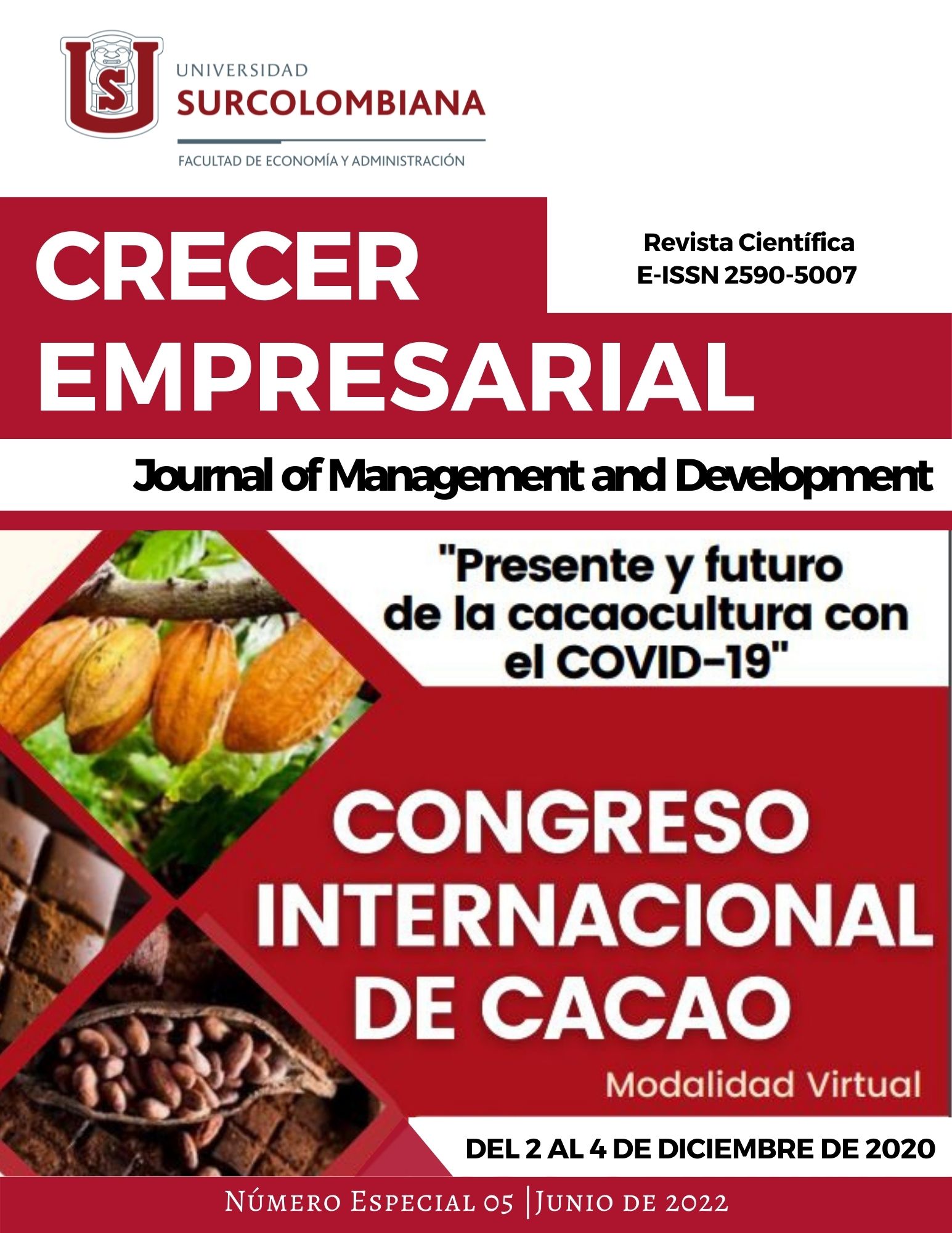The selection of candidates for sensory evaluator to determine the quality of the cocoa liquor.
##plugins.themes.bootstrap3.article.main##
The work objective was to select a group of candidates for expert sensory evaluation of cocoa liquor. This work of pre-selection, selection, and training was carried out during the COVID-19 pandemic. In the development of this process, the current regulations generated by the Colombian Institute of Standardization ICONTEC were taken as support, mainly with the GTC 165 of 2014 and GTC 280 of 2017, which allow developing an appropriate process of pre-selection and selection of candidates for food sensory evaluator. Once the pre-selection and selection process was completed, a group of candidates for sensory evaluator training was obtained with a reliability of 95% that will ensure an adequate training and training process. A group trained in the evaluation of cocoa liquor allows to support the cocoa production chain and thus contribute to the maintenance and improvement of the material selection processes and post-harvest processes to maintain the category of fine cocoa and aroma of cocoa produced in Colombia.
Downloads
##plugins.themes.bootstrap3.article.details##
Arrieta, Alexandre, Vera M. José, Quintana Lucas, and García Alberto. 2018. “Research Article Selection of Judges to Train Sensorally in the Cacao Cataction in the Sena Center of Attention to the Santander Regional Agricultural Sector.” Pp. 230–32 in Advance Journal of Food Science and Technology. Vol. 15.
ICONTEC. 2014. “ICONTEC (2014). GTC 165. Análisis Sensorial. Metodología. Guía General. Bogotá D.C.: ICONTEC. ICONTEC (2006). NTC 3883. Análisis Sensorial. Prueba Dúo-Trío. Bogotá D.C.:
ICONTEC.” 3883.
ICONTEC (2017). GTC 280: Análisis sensorial. Directrices para la selección, el entrenamiento y seguimiento de evaluadores seleccionados y expertos. Bogotá D.C.: ICONTEC.
Gengler, Irene, 1940. “When People Are The Instrument Sensory Evaluation Methods.” ASQ Statistics Division Newsletter 27(4):8–12.
ICONTEC. 2006. “Ntc 2681.Análisis Sensorial. Metodología. Prueba Triangular.” 19.
ICONTEC. 1996a. “NTC 3915: Análisis Sensorial. Metodología. Método Para Investigar La Sensibilidad Del Gusto.” 9.
ICONTEC. 1996b. “NTC 3932: Análisis Sensorial. Identificación y Selección de Descriptores Para Establecer Un Perfil Sensorial Por Una Aproximación Multidimensional.” 33.
ICONTEC. 2004. “NTC 5278: Análisis Sensorial. Metodología. Análisis Secuencial.”
ICONTEC, Instituto Colombiano de Normas Técnicas y certificación. 2006. “NTC 3883. Análisis Sensorial. Metodología. Prueba Duo-Trio.” (571).
International Cocoa Organization. 2015. “Annual Report International Cocoa Organization (ICCO) 2014/2015.” 76.
Montiel, Campo D. E.(2002) E. S. El, Examen D. E. Las, Propiedades Organolépticas, and Entrenamiento D. E. L. O. S. Catadores. 2002. “El Panel De Cata” 1–6.
Lenin Vera-Montenegro, and Escuela Superior Polit. 2017. TECNOLOGÍA POSTCOSECHA PARA PEQUEÑOS PRODUCTORES DE CACAO.
Quintana Fuentes, Lucas Fernando, Alberto García Jerez, and Edith Moreno Martínez. 2018. “Perfil Sensorial de Cuatro Modelos de Siembra de Cacao En Colombia.” Entramado 14(2):256–68.
Quintana, Lucas, Salomón Gómez, Alberto García, and Nubia Martínez. 2016. “Conformación de Un Panel de Jueces En Entrenamiento Para El Análisis Sensorial de Licores de Cacao Obtenidos de Diferentes Modelos de Siembra.” 12(2):220–27.
Quintana, Lucas, Salomón Gómez, Alberto García, and Nubia Martínez. (2015). “Caracterización de Tres Índices de Cosecha de Cacao de Los Clones CCN51, ICS60 e ICS 95, En La Montaña Santandereana, Colombia Santandereana Mountain, Colombia.” Revista de Investigación Agraria y Ambiental Volumen 6:253–66.
Quintana, Lucas y Gómez Salomón. (2011). “Perfil Del Sabor Del Clon CCN51 Del Cacao (Theobroma Cacao L.) Producido En Tres Fincas Del Municipio de San Vicente de Chucurí .45–58.
Quintana, Lucas, Salomón Gómez, Alberto García, and Nubia Martínez. 2015. “Perfil Sensorial Del Clon de Cacao (Theobroma Cacao L .) CCN51 (Primera Cosecha de 2015 ).” 51(1):60–65.
Reyna, María, and Liria Domínguez. 2008. Guía Para La Evaluación Sensorial de Alimentos.
Sukha, Darin A., David R. Butler, Pathmanathan Umaharan, and Emma Boult. 2008. “The Use of an Optimised Organoleptic Assessment Protocol to Describe and Quantify Different Flavour Attributes of Cocoa Liquors Made from Ghana and Trinitario Beans.” European Food Research and Technology 226(3):405–13.
Thamke, Ines, Klaus Dürrschmid, and Harald Rohm. 2009. “Sensory Description of Dark Chocolates by Consumers.” LWT - Food Science and Technology 42(2):534–39.
Toker, Omer Said, Ibrahim Palabiyik, Haniyeh Rasouli Pirouzian, Tugba Aktar, and Nevzat Konar. 2020. “Chocolate Aroma: Factors, Importance and Analysis.” Trends in Food Science and Technology 99.



